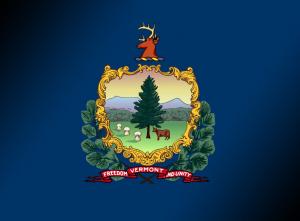Vermont Endorses New Budgets for EE Providers

Declaring that it is "much cheaper to save a [kilowatt-hour (kWh)] than it is to generate a kWh," the Vermont Public Utility Commission has reinforced its support for ongoing energy efficiency (EE) endeavors. The commission affirmed that even though it has long focused on energy efficiency as a means for reducing electricity demand and consumption, it had determined that significant opportunities still remain for cost-effective electricity and natural gas efficiency improvements. Consequently, the commission ruled that the three primary purveyors of EE services within the state — Efficiency Vermont, the City of Burlington Electric Department, and Vermont Gas Systems — should continue to invest in EE initiatives.
The commission explained that over the course of the last few decades, the various EE measures offered to consumers had resulted in a "dramatic" reduction in energy demand throughout the state. The commission reported that, to date, the EE programs have yielded savings of approximately 15% with respect to electricity needs.
The commission pointed out that it is not just those consumers who directly install EE measures on their premises that benefit from EE services. That is, the commission averred, all ratepayers share in the savings when individual customers' reduced usage collectively allows utilities to decrease the amount of power purchased to satisfy demand. Moreover, the commission said, lower overall demand permits utilities to defer capital projects, such as capacity expansions or new plant construction.
In examining specific budget proposals for the three EE providers, the commission stated that it was guided by a 20-year planning and forecasting horizon, and it listed anticipated investment levels for each of the three for each of the next 20 years. However, only the budgets for 2018, 2019, and 2020 were adopted on a formal basis.
As the only entity that offers EE measures throughout the state, Efficiency Vermont obviously was afforded a much larger budget than the other two, reflecting an allotment of close to $44.124 million for electricity- related measures in each of the three years. The commission said it anticipates Efficiency Vermont's annual budgets increasing by approximately $1 million per year thereafter. In the final year of the 20-year planning period (2037), the commission estimated that Efficiency Vermont's budget would be about $61.78 million, while the 20-year cumulative total would surpass $1 billion.
For the Burlington Electric Department (BED), the commission authorized electricity-related EE investments of nearly $2.396 million in 2018, but a slightly higher level of $2.544 million in both 2019 and 2020. However, unlike Efficiency Vermont, the commission predicted no further growth in BED's annual budget through 2037. The 20-year tally of EE investments for BED was estimated at $50.74 million.
Because the EE programs overseen by Vermont Gas Systems (VGS) are more narrowly tailored to focus on natural gas, the annual budgets for VGS were scheduled to vary by only a small amount between 2018 and 2020, rising from $2.889 million in 2018 to $3.03 million in 2020. And, as was the case with BED, the budgets for VGS will not rise any further after 2020, but will remain at $3.03 million per year through 2037. The cumulative expenditure level for VGS thus comes to about $60.45 million over the 20-year term.
The commission commented that while all ratepayers in the state see a rider on their bills to fund the various EE initiatives, such adders are extremely modest overall and quite small in relation to total energy costs. Plus, the commission said, in light of the success of the programs over the years, and rising budgets notwithstanding, most consumers will actually see some short-term rate relief under the newly adopted EE investment schedules.
The commission underscored the fact that while ratepayers will benefit from the slightly lower EE surcharges in the near term, the most important thing is that the EE programs have produced substantial savings over the long run. As an example, the commission cited data from 2015, which showed that Efficiency Vermont had been able to deliver electric efficiency at a cost of approximately 4.4 cents per kilowatt-hour (kWh).
The commission said that represented a significant cost benefit when compared to the average price of electricity supply of 8.2 cents per kWh. Re 2016-2017 Demand Resources Plan Proceeding, Case No. EEU-2016-03, July 7, 2017 (Vt.P.U.C.).



